Optimizing Field Operations: The Role of Workforce Management Systems in Energy and Utilities
In the energy and utilities world, keeping field operations running smoothly is like keeping the lights on – literally. So, let’s cut to the chase – managing field teams effectively means problems get fixed fast, with less downtime and fewer disruptions. By making the best use of resources, companies can save money and boost efficiency.
And what’s the magic solution here? You guessed it, a workforce management system! This smart software gives you real-time data and analytics, helping you make smarter decisions and stay ahead of maintenance issues. Plus, it keeps communication between field workers and the main office as smooth as butter, improving coordination and response times. In the end, all these perks lead to happier customers and a stronger, more reliable service. So, let’s dive into the world of workforce management and see what’s missing that might be holding your company back.
The Role of Workforce Management Systems in the Energy and Utilities Industry
Workforce Management Systems (WMS) are super important for companies in the energy and utilities sector. They help streamline and automate different processes, making sure field operations run smoothly and efficiently.
WMS is key for optimizing field work, boosting service reliability, ensuring safety and compliance, cutting costs, improving customer satisfaction, and making data-driven decisions. All these perks add up to the overall success and sustainability of businesses in the energy and utilities industry.
Workforce Management vs Human Resource Management vs Resource Management
Before we dive into whether your company’s workforce management is up to snuff, let’s clear up some business lingo to avoid any mix-ups. Human resource management, resource management, and workforce management are all integral to the success and sustainability of the companies, but they each handle different stuff. Together, these practices are like the “Avengers” for companies in the energy and utilities sector – essential for tackling challenges and ensuring long-term success and stability.
So, let’s break it down.
Human Resource Management (HRM) deals with an organization’s human capital. It is essential for attracting, developing, and retaining talent. The energy and utilities sector faces a significant skills gap, especially with the shift towards digitalization and renewable energy, which pushes businesses to balance between looking for seasoned professionals and using software systems that are able to automate processes and make them sustainable.
Resource Management (RM) handles all company’s resources, including human, financial, and physical assets. In the energy industry, it involves the efficient and sustainable use of these resources.
Workforce Management (WFM) is all about getting the job done efficiently. Basically, it focuses on optimizing the productivity and efficiency of the company’s workforce.
Understanding these differences helps to figure out what your workforce management platform should cover.️
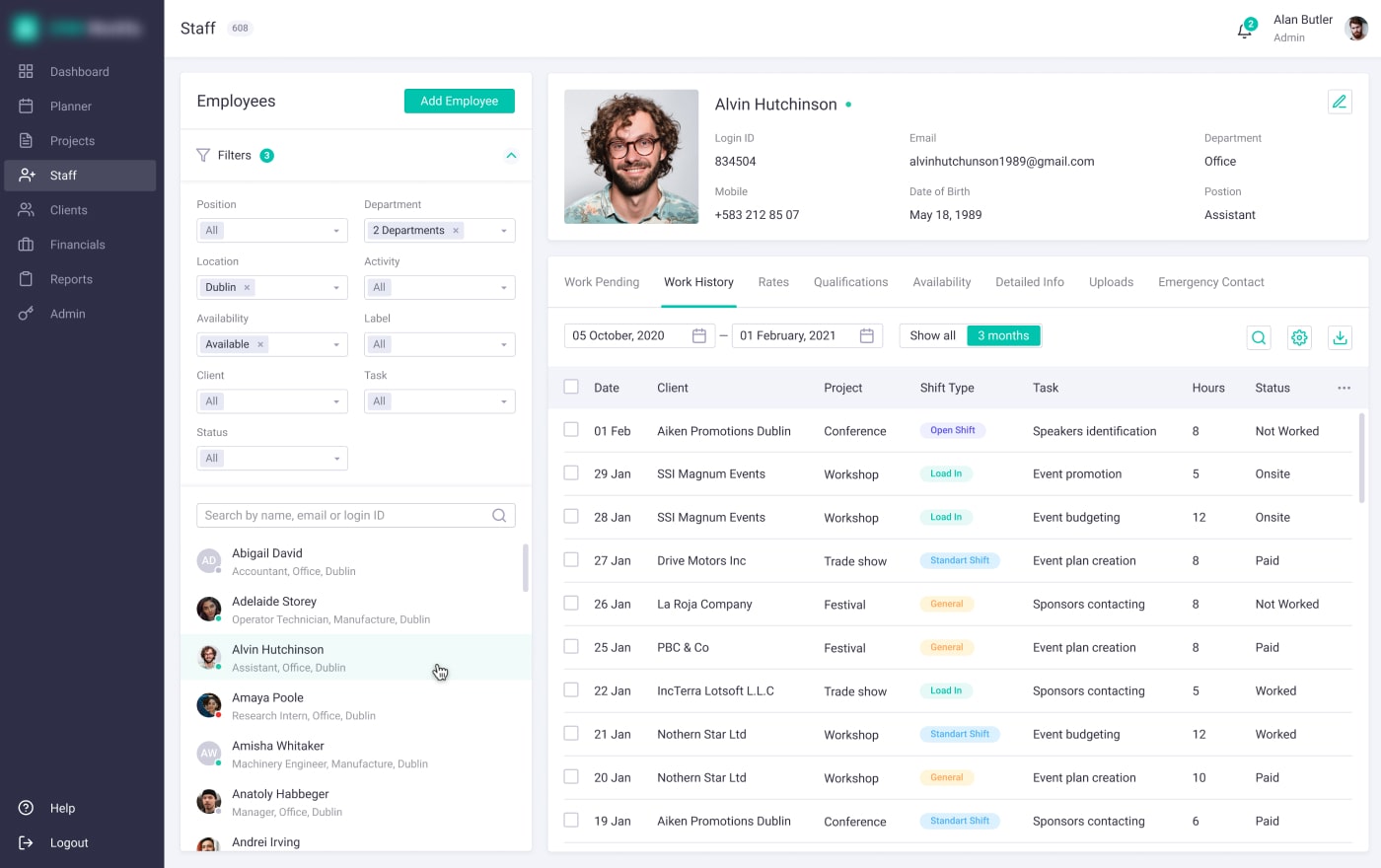
Source: Automated Workforce Management and Scheduling System
To make it simple, resource management is the overarching principle, which involves the efficient and effective deployment of all organization’s resources, including human resources, financial resources, technological resources, natural resources, etc. Thus, HRM is the part of resource management, because it is concerned with the overall management of an organization’s human capital. And, workforce is the part of HR management, as it specifically targets the optimization of a company’s workforce to achieve operational efficiency and productivity.
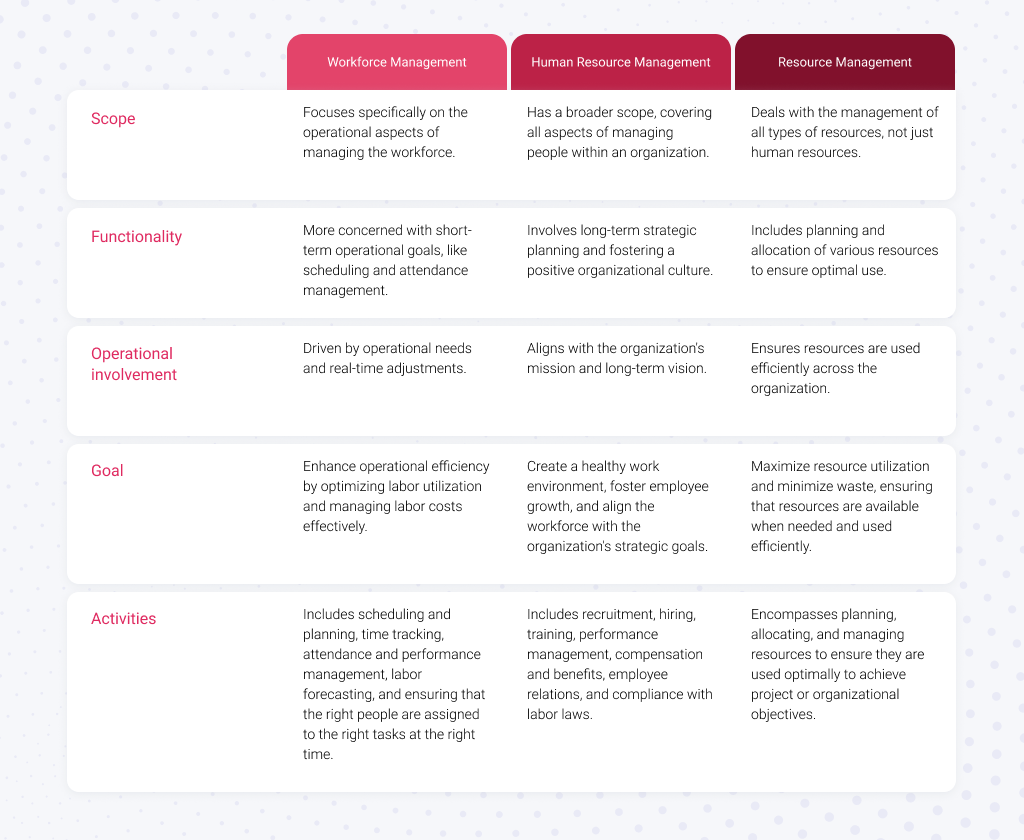
Read Also Should Your HR Department Use HRIS for Info and Talent Management? Or Would You Rather Choose HCM or HRMS Instead?
Utility Workforce Challenges WFM Systems Can Deal With
So, going back to understanding the workforce management tools for the utilities and energy domain, these are specialized solutions designed to help businesses deal with common industry challenges:
- Inefficient Use of Personnel. Companies often struggle with optimizing workforce deployment, which can lead to inefficiencies and increased operational costs. Using workforce management software can help them to create efficient and fair work schedules and optimize scheduling to improve service delivery.
- Data Gathering Issues. Collecting and analyzing data from various sources can be cumbersome and can affect decision-making. WFM systems provide businesses with real-time data integration to give employees a comprehensive view of operations.
- Disjointed Communication. Poor communication between field workers and management can lead to delays and errors, which can be avoided by implementing a workforce system that includes features for real-time communication and collaboration.
- Unpredictability. Of course, this industry is prone to unexpected events like natural disasters, which require rapid and coordinated responses. And the WFM tools can quickly mobilize and deploy teams to ensure immediate emergency response.
And the list goes on. This type of software is able to cover most of the challenges and issues that businesses in the energy and utilities domain can run into. So, let’s see which features your software must have in order to keep your workforce operations in order.
Read Also The Intricate Art of Maximizing Value. How To Make Every Coin Spent Worth its Weight In Gold
5 Essential Features of Workforce Management Systems
Now that we are on the same page, let’s see which features are essential for workforce management software systems that will let you take the most out of the platform.
1. Real-Time Scheduling and Dispatching
This feature allows energy and utilities businesses to dynamically manage and allocate their workforce based on real-time data and changing conditions. Workforce management scheduling is a crucial component of modern workforce processes, because it helps companies to stay competitive and responsive in a dynamic environment. The key goals of a scheduling system include:
- Dynamic Allocation. The feature enables the real-time assignment of tasks and shifts to employees based on current demand, availability, and skill sets.
- Immediate Adjustments. It allows for quick adjustments to schedules in response to unforeseen changes, such as employee absences or sudden spikes in demand.
- Integration with Other Systems. Often, businesses are in need of integrating their workforce software with other systems, like demand forecasting and route optimization to ensure that the right resources are deployed efficiently.
Why is it essential?
Making sure you’ve got the right number of employees in the right spots at the right times helps to cut down on downtime and overstaffing, making everything run smoother. Plus, real-time scheduling keeps labor costs in check by cutting down on overtime and ironing out inefficiencies. It also helps to maintain top-notch service by quickly adapting to changes and meeting customer needs promptly. On top of that, fair and predictable scheduling boosts employee satisfaction and lowers turnover.
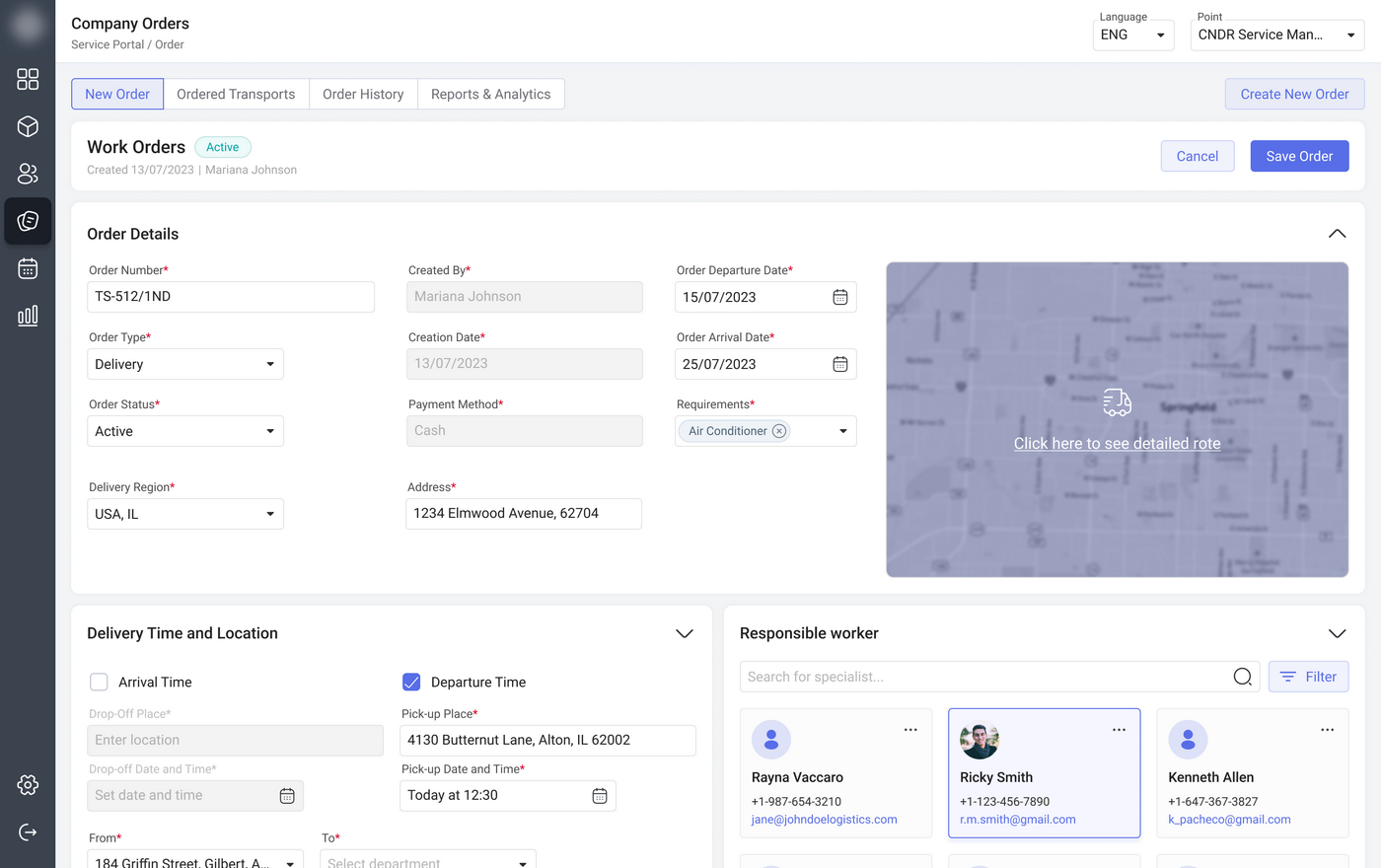
Ensures that the right personnel are deployed to the right locations promptly, enhancing operational efficiency.
2. Asset Tracking and Inventory Management
This feature is designed to monitor and manage the physical assets and inventory of a business in relation to employees. It is vital to track the location, status, and maintenance of assets (for example, an employee is using an instrument at the moment, but it’s time for its maintenance), as well as to manage inventory levels to ensure that necessary materials and equipment are always available for the staff. The feature is useful for:
- Real-Time Tracking. Depending on the technologies you want to use, it can utilize GPS and IoT devices to monitor the real-time location and status of the assets in use.
- Automated Inventory. Integrating an inventory management module into your WFM system helps in tracking stock levels, predicting shortages, and automating reordering processes to determine the work of employees.
- Maintenance Scheduling. Schedules and tracks preventive and corrective maintenance activities to let the staff know when they are required.
Why is it essential?
You will be able to ensure that assets are available and in good working condition, minimizing downtime and disruptions in staff’s work. Besides that, the module will be able to help your employees with maintaining accurate records for regulatory compliance, reducing the risk of legal issues. It will also identify potential issues before they become critical, enhancing safety and reliability.
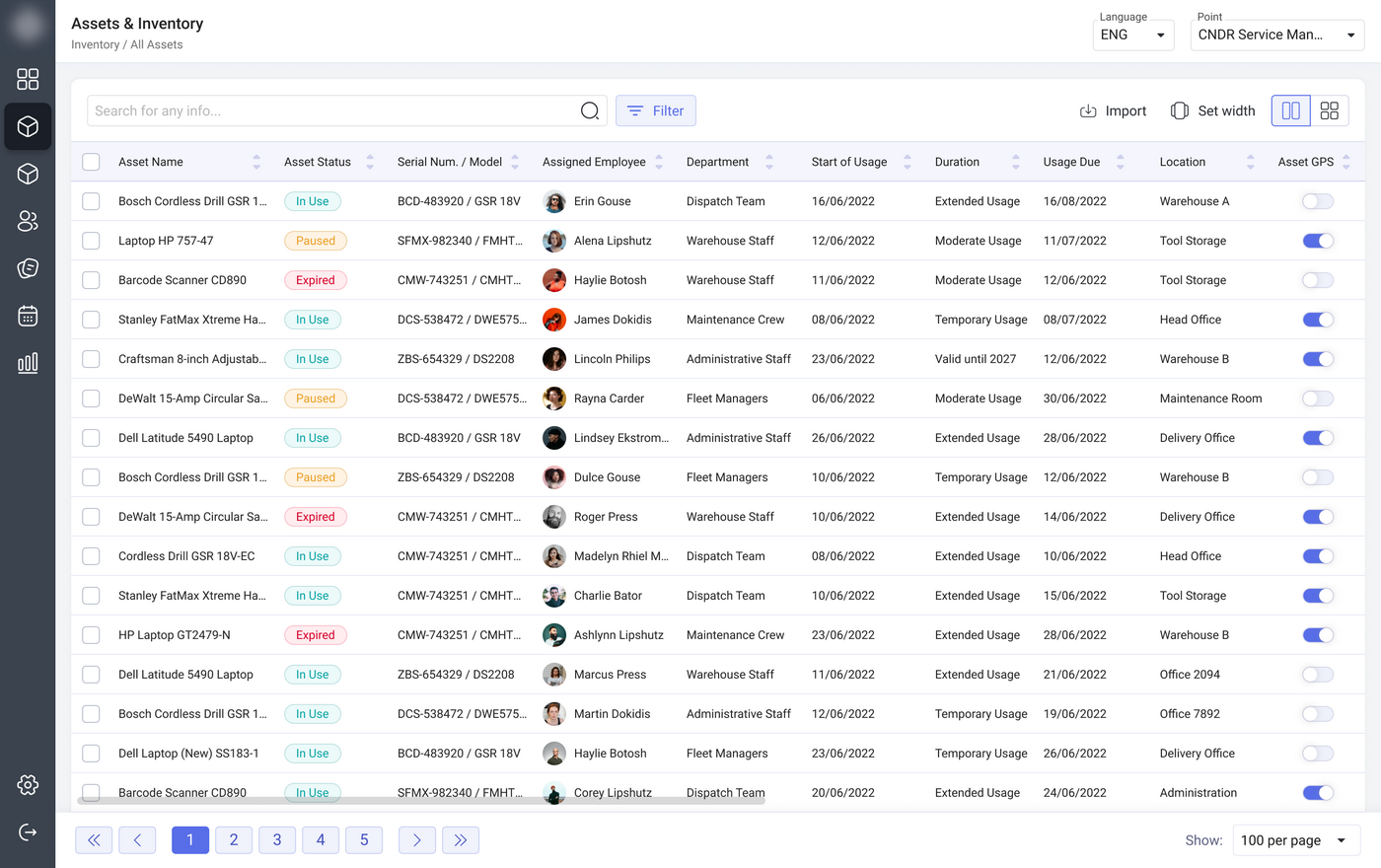
Perfect when you need to prevent overstocking or understocking, reducing unnecessary expenses and optimizing resource allocation.
3. Time and Attendance Tracking
This software feature is all about keeping track of when employees clock in and out, including their breaks and any schedule hiccups. Time and Attendance Tracking is a key part of workforce management software, because it helps your company to keep accurate records, stay compliant with regulations, and optimize the workforce. The main goals include:
- Automated Time Tracking. Depending on your business needs, you can use technologies, like biometric scanners, mobile apps, or web tools to automatically log employee hours.
- Integration with Payroll. Your system can sync with payroll to ensure accurate and timely paychecks.
- Self-Service Options. Employees can clock in and out, request time off, and check their attendance records through a self-service portal.
Why is it essential?
This feature ensures precise tracking of work hours, which is crucial for accurate payroll and compliance with labor laws. It automates attendance tracking, cutting down on admin work and errors. Plus, it helps businesses stick to labor regulations by keeping accurate records of hours and attendance. And let’s not forget that it can provide insights into attendance patterns, helping to spot and address issues like absenteeism or tardiness.
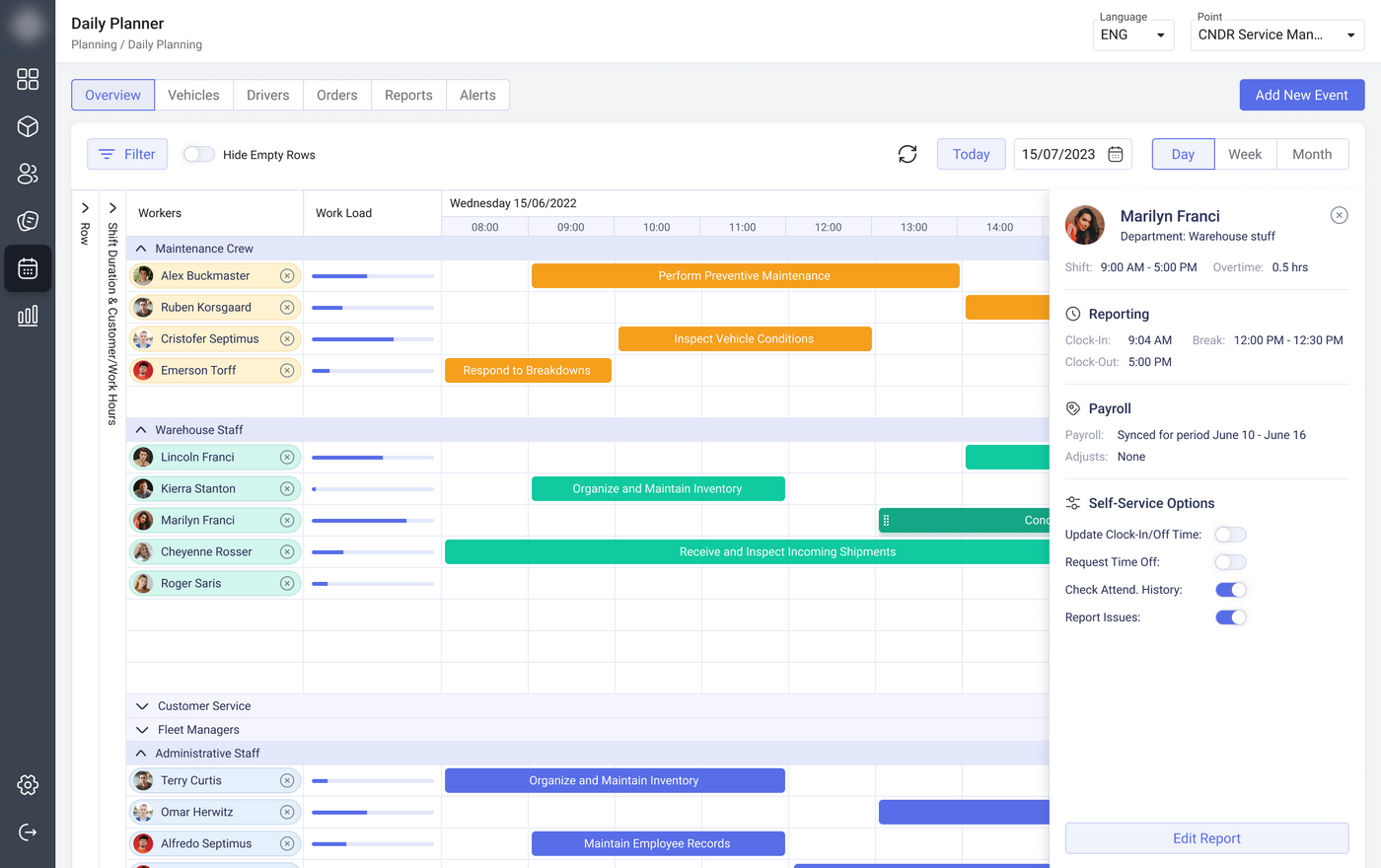
Helps to control labor costs by reducing instances of time theft and ensuring employees are paid correctly for the hours they work.
4. Data Analytics and Reporting
In case you need this feature to be more complex than just being a part of any other system feature, it is possible to integrate reports and analytics into your workforce software as an individual module. Thus, with its help, you will be able to handle collection, analysis, and presentation of data related to various workforce metrics. This feature provides insights into employee performance, attendance, labor costs, and other key areas. The essential characteristics of the feature involve:
- Visual Analytics. Uses data visualization tools, like charts, graphs, and dashboards, to present data in an easily understandable format.
- Customizable Reports. Usually, allows users to create and customize reports based on specific metrics and requirements.
- Integration with Other Systems/Modules. It is possible to integrate it with other HR software and payroll systems to provide a comprehensive view of workforce metrics.
Why is it essential?
Having a possibility to analyze data-driven insights and create reports allows managers to make informed decisions about workforce planning, scheduling, and other business operations. It also helps to track employee performance and identify areas for improvement, enabling targeted interventions and training when required. Besides that, you will be able to have insights into labor costs, helping your energy and utilities business to identify opportunities for cost savings and more efficient resource allocation.
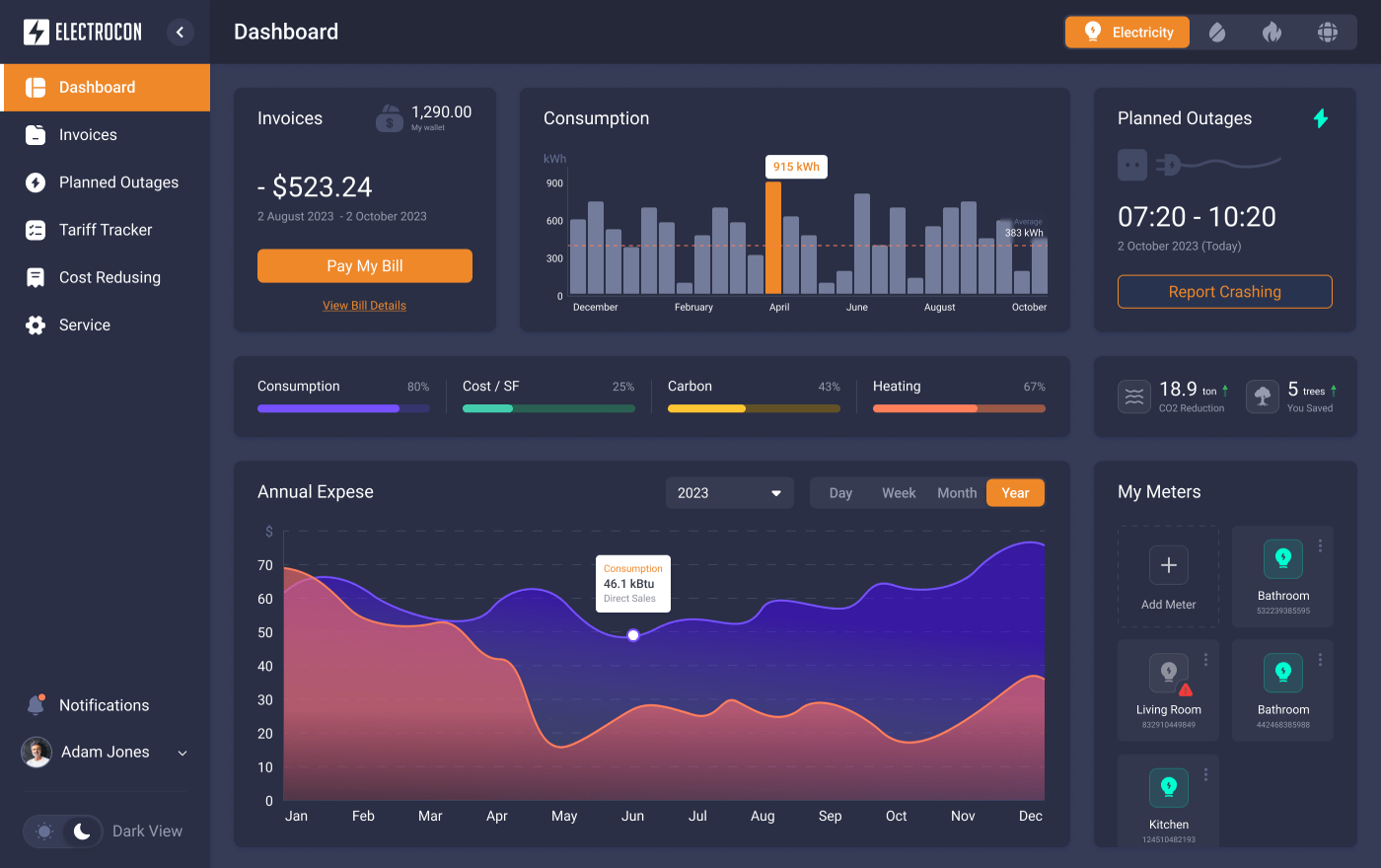
Source: Custom Energy Management Software
5. Training Management
Imagine a world where employees are always on top of their game, knowing the latest industry standards, and performing tasks like pros. That’s what this feature brings to the table. By integrating it, WFM systems help utility companies keep a workforce that’s not just skilled, but also compliant, leading to top-notch performance and safety.
- Training Scheduling and Skill Development. You can schedule training sessions, track employee participation and their progress, ensure that all employees complete necessary training on time, and provide targeted training programs (with suitable training materials) to address the gaps.
- Compliance and Certification Management. Ensures that employees meet regulatory requirements by tracking certifications and compliance training. This is particularly important in the utilities sector, where safety and regulatory compliance are critical.
- Performance Assessment and Analytics. It becomes possible to assess the effectiveness of training programs through quizzes, tests, and/or performance evaluations. And then, generate reports on these training activities and employee progress to make.
Why is it essential?
Training Management is the secret sauce for utility WFM. It ensures employees are ready to tackle new technologies, industry standards, and evolving job roles. The utility sector is full of high-risk tasks, so proper training is a must to keep everyone safe and sound. Plus, with the industry constantly evolving, continuous training helps employees stay sharp and adaptable, keeping the organization ahead of the curve.
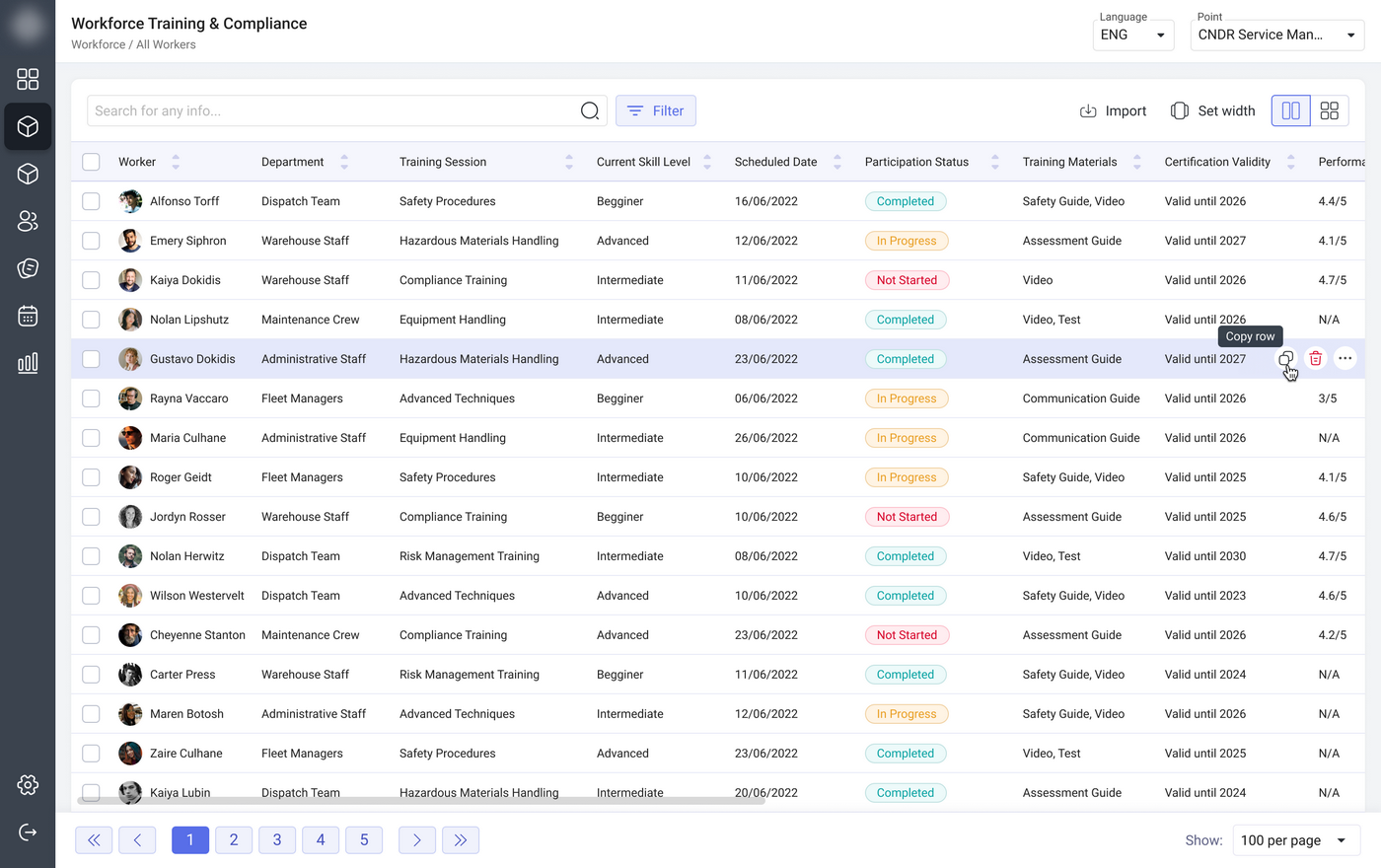
Helps to identify areas where employees can improve, leading to better overall performance and productivity.
Key Considerations for Developing Workforce Management Software
Developing workforce management software for the business that is in the energy and utilities industry involves several key considerations to ensure it meets the unique needs of this sector. By keeping this in mind, software developers are able to create robust workforce systems that will enhance your company’s efficiency, compliance, and productivity.
User-Friendly Interface
Make sure your software is intuitive, works on mobile devices, and is easy to use for both field workers and office staff to minimize training time and boost overall productivity.
Scalability
The system must be flexible and have capacity for expansion to be able to keep up with the fast-paced changes and tech advancements in the energy and utilities domain.
Information Security
Security is another critical consideration, as the software must protect sensitive data from breaches and unauthorized access and ensure compliance with industry regulations.
Customization
Customization options let you tailor the software to fit the specific needs of different departments and workflows within your company, making sure everything aligns perfectly with operational needs.
System Compatibility
Integration is key, as the system may need to seamlessly connect with existing hardware and software, such as ERP, CRM, and asset management platforms, to give you a unified view of operations.
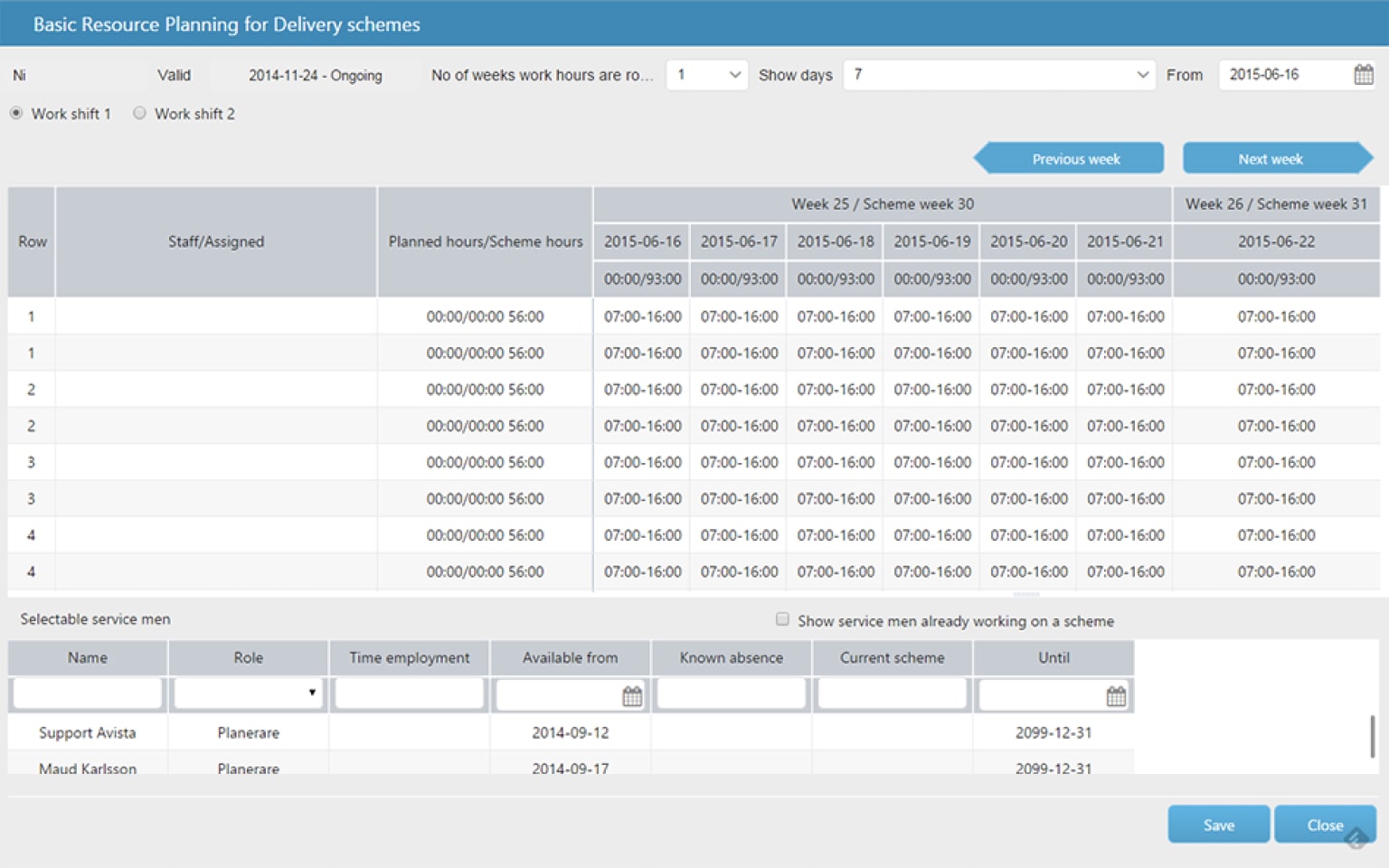
Source: Workforce and Facility Management System
Let’s look at the real-life example of a workforce management system and what we considered in the process. First of all, we ensured that the software will automatically collect, store, and update the needed data, seamlessly working with other company’s platforms (including the data on contracts, inventories, clients and offering offline-mode support, notifications, NFC-tags, and GPS tracking support). Considering this factor, we also made the system scalable and user-friendly for all users. Thus, for example, a client requested to have implemented built-in analytical and visualization tools specifically designed to help analyze data.
If you want to know about this case study, and how we helped one of our customers, please watch the video below.
Conclusions
Creating workforce management software for the energy and utilities industry isn’t just about pushing buttons and writing code. It’s about considering a bunch of factors to make sure it fits this unique domain like a glove. By focusing on regulatory compliance, scalability, integration capabilities, real-time data, and analytics (and a sprinkle of magic), developers can whip up robust systems that boost operational efficiency, compliance, and productivity. launch
These systems are the unsung heroes of field operations, optimizing everything from A to Z. A well-designed system doesn’t just meet the business’s operational needs; it also paves the way for long-term success and sustainability.
So, if you’re looking to develop a new system or give your current one a facelift, contact us! Our team of seasoned experts is ready to help you out. Let’s make your operations smoother than ever!







